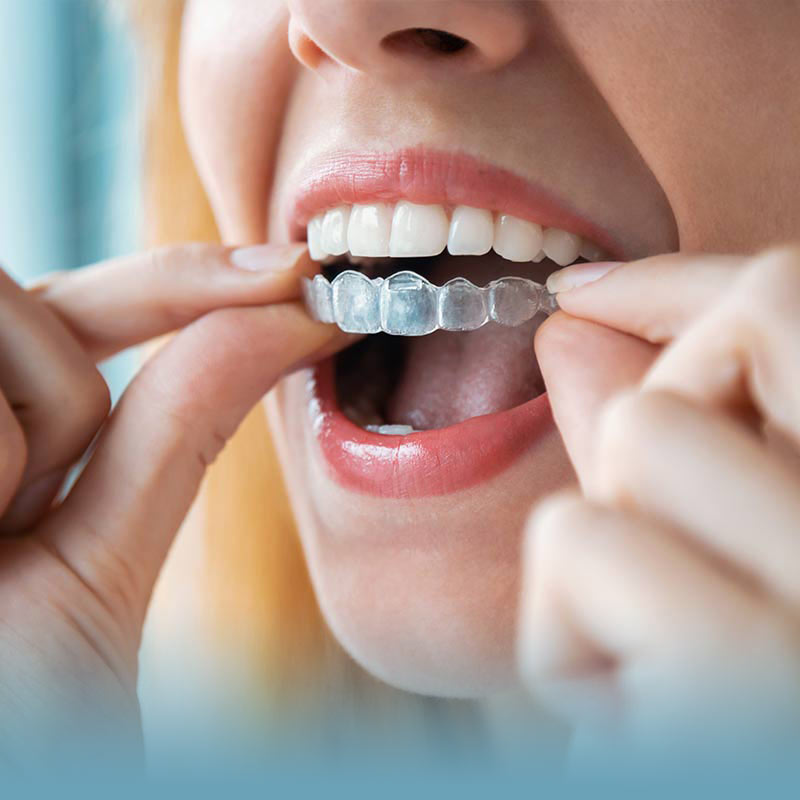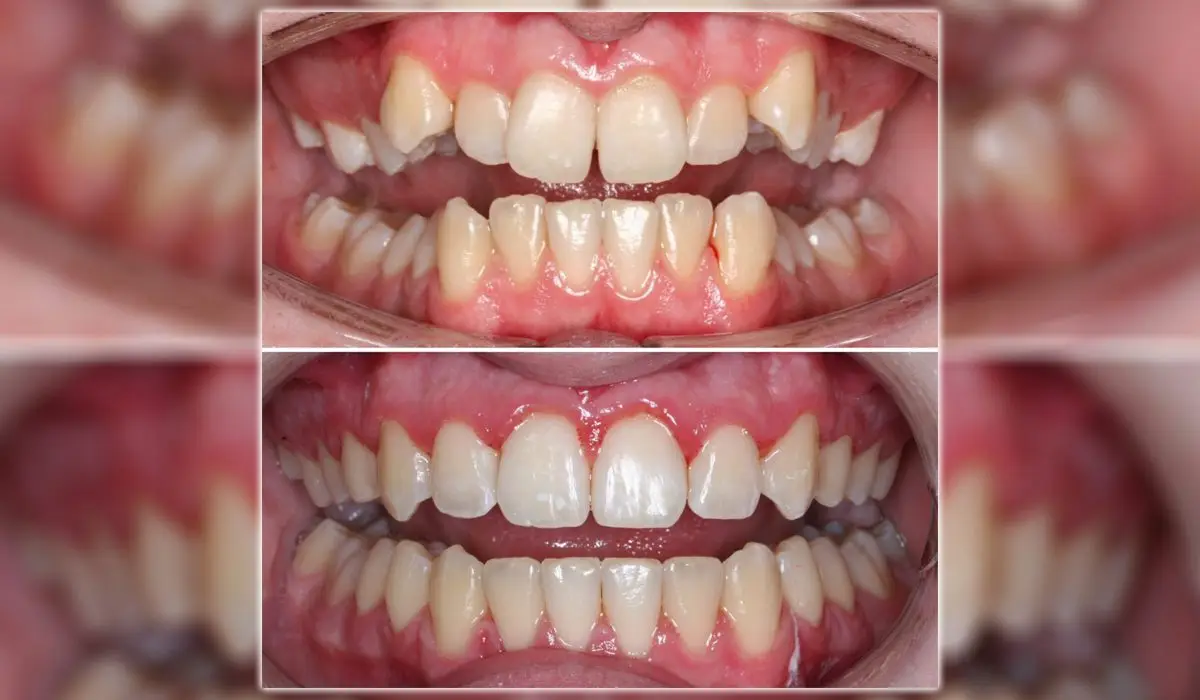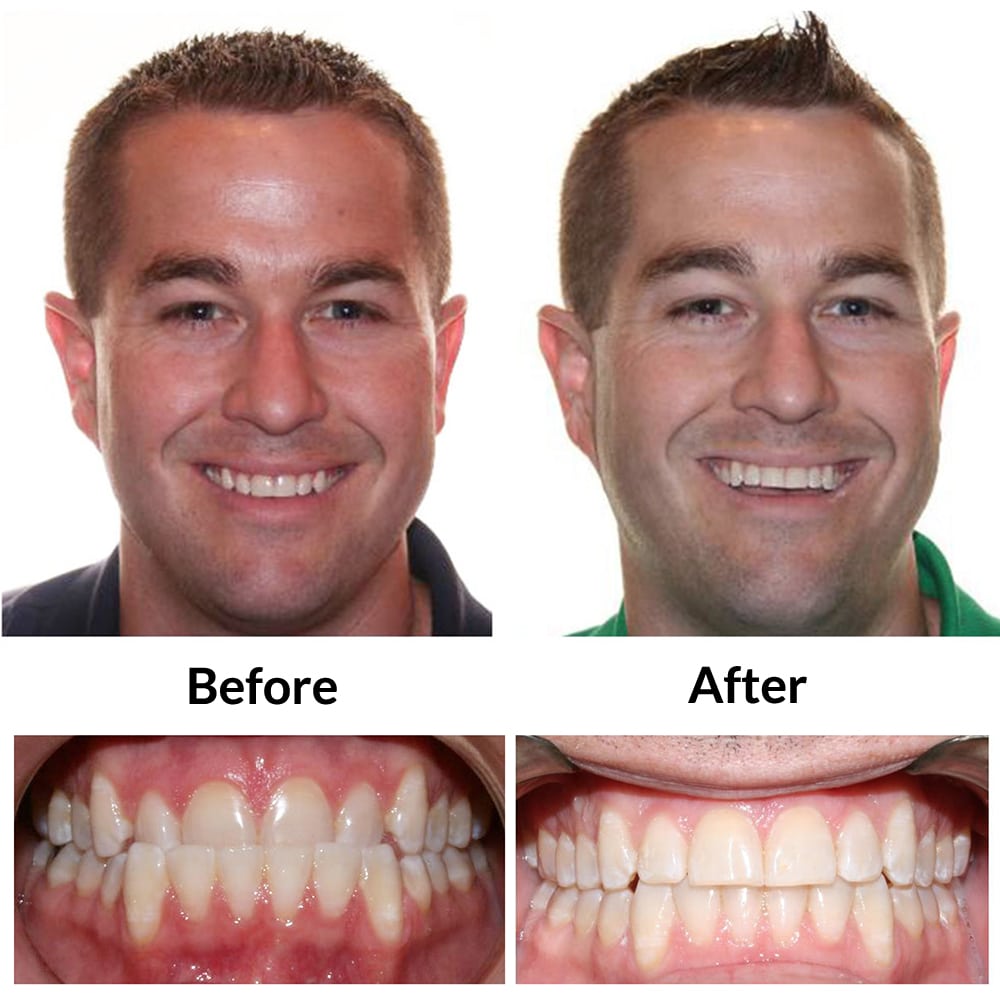The Ultimate Comparison: Invisalign vs. Traditional Braces for Adults
The Ultimate Comparison: Invisalign vs. Traditional Braces for Adults
Blog Article
Invisalign vs. Typical Braces: Which Option Is Right for You?
When considering orthodontic therapy, the selection in between Invisalign and standard dental braces offers numerous crucial variables that warrant mindful analysis. Invisalign offers a discreet choice with removable aligners, while standard dental braces offer an extra noticeable yet reliable option for serious misalignment.
Summary of Therapy Options

On the other hand, conventional dental braces are composed of steel brackets and cables that are bonded to the teeth. This approach applies continuous stress with time to accomplish positioning. While reliable for complicated orthodontic concerns, standard dental braces need normal brows through for adjustments and can pose difficulties in keeping dental hygiene because of the difficulty of cleaning around braces and cables.
Both choices have their merits, and the selection commonly rests on certain oral problems, way of life preferences, and person conformity. Inevitably, getting in touch with an orthodontic specialist is vital for identifying one of the most suitable treatment strategy tailored to individual requirements. Comprehending the nuances of each choice can significantly influence the overall success of orthodontic treatment.
Aesthetic Considerations
A considerable aspect influencing the option in between Invisalign and typical dental braces is the aesthetic charm each treatment provides. Invisalign aligners are crafted from clear plastic, making them essentially undetectable when worn.
In comparison, typical braces include steel brackets and wires, which can be a lot more noticeable. While advancements in orthodontic modern technology have actually brought about the growth of smaller sized braces and colored elastics, standard braces still preserve a more conspicuous account. For some individuals, the visibility of dental braces may prevent them from looking for required therapy.
Ultimately, the option between Invisalign and conventional braces may hinge on personal choices concerning appearances. Clients who focus on discernment often lean towards Invisalign, while those that are less worried about presence may go with conventional braces. Recognizing the visual implications of each option is vital for making an informed choice that lines up with one's lifestyle and choices.
Comfort and Convenience

In terms of benefit, Invisalign aligners are removable, enabling patients to enjoy their favorite foods without constraint and maintain optimum dental health. Cleaning and flossing are streamlined, as the aligners can be obtained during these routines, whereas standard dental braces call for cautious steering around braces and cables.
Additionally, Invisalign's dynamic system permits fewer orthodontic check outs. Clients typically receive several sets of aligners simultaneously, which why not find out more can streamline the therapy process and minimize time invested in the orthodontist's chair. In contrast, standard dental braces require routine adjustments, making them much less convenient for those with hectic routines. Invisalign. Generally, the convenience and comfort of Invisalign make it an enticing option for numerous individuals seeking orthodontic therapy.
Treatment Period and Effectiveness
While both Invisalign and conventional dental braces are efficient in remedying oral imbalances, the period of treatment can vary significantly in between the two alternatives. Typically, Invisalign therapy can take anywhere from 12 to 18 months, relying on the intricacy of the case. The clear aligners work by gradually changing teeth into their wanted settings, and regular follow-ups with an orthodontist help make sure progression remains on the right track.
In comparison, standard dental braces frequently call for a longer commitment, normally varying from 18 months to 3 years. This is because of their fixed nature and the usage of braces and cords, which can be much more efficient for complex cases and extreme misalignments (Invisalign). The treatment efficiency of typical dental braces is well-documented, as they permit for precise adjustments and better control over tooth motion
Eventually, the choice in between Invisalign and typical dental braces may depend upon both the expected treatment period and the specific oral issues available. Consulting with an orthodontist is essential, as they can offer customized suggestions based on private needs, ensuring the chosen approach lines up with preferred durations and outcomes.
Cost Comparison and Insurance Alternatives
Expense plays a considerable role in the decision-making procedure for individuals thinking about orthodontic treatment, whether selecting Invisalign or traditional braces. Generally, the cost of Invisalign arrays from $3,000 to $8,000, while standard braces commonly cost between $2,000 and $6,000. Aspects influencing these costs consist of the intricacy of the instance, the period of therapy, and geographical area.
Numerous dental insurance plans supply partial coverage for orthodontic therapies, yet the specifics can vary extensively. Usually, typical braces may be more frequently covered by insurance policy plans compared to Invisalign, which some insurance providers classify as an aesthetic procedure.
In addition, numerous orthodontic methods offer flexible layaway plan, making both therapy options much more accessible. Patients must make inquiries about possible funding choices and discount rates for ahead of time payments. Reviewing the total expense, including insurance coverage advantages and repayment strategies, is necessary for making an informed choice that straightens with both visual choices and budget plan considerations.

Conclusion
In recap, the choice in between Invisalign and conventional braces pivots on multiple variables, including visual preferences, convenience, browse this site treatment period, and cost. Invisalign supplies a discreet, detachable option that facilitates oral health and dietary adaptability, while conventional dental braces may be extra ideal for complicated oral issues and usually come at a lower cost factor. Eventually, consultation with an orthodontist is necessary to evaluate specific situations and determine one of the most ideal therapy option for accomplishing optimal dental placement.
When thinking about orthodontic treatment, the selection between Invisalign and traditional dental braces provides several vital factors that warrant cautious assessment.Contrasting Invisalign and traditional braces exposes distinctive treatment options for orthodontic improvement.While both Invisalign and traditional dental braces are effective in dealing with dental imbalances, the period of treatment can differ substantially between the 2 alternatives.Cost plays a significant role in the decision-making process for individuals thinking about orthodontic therapy, whether opting for Invisalign or standard dental braces.In recap, the option between Invisalign and conventional braces pivots on numerous variables, Read Full Article consisting of visual preferences, comfort, treatment duration, and price.
Report this page